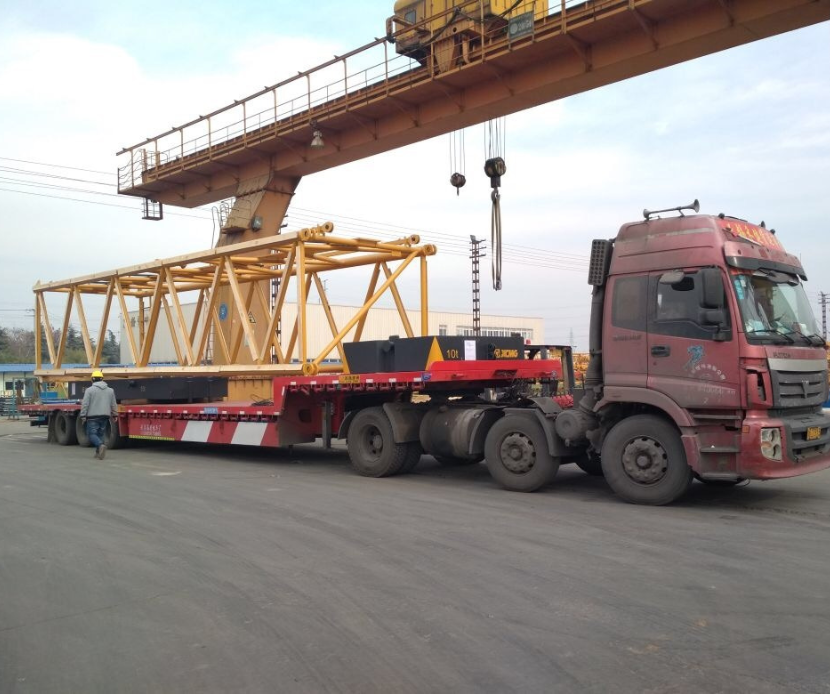


Before we delve into the nitty-gritty details of how to enhance your supply chain's agility, let's take a moment to understand why it's so crucial.
Imagine this scenario: you're running a retail business, and suddenly, a global pandemic strikes. Customer behavior shifts overnight, and your entire supply chain is thrown into chaos. Those who have embraced agility are better equipped to handle such disruptions. They can quickly adjust their operations, find alternative suppliers, and meet changing customer demands. Meanwhile, those stuck in rigid supply chains may struggle to keep up, risking not only their profits but their very survival.
So, what exactly is agility in supply chain management? It's the ability to respond swiftly and effectively to changes in demand, disruptions in supply, or shifts in market conditions. It's about being proactive, adaptive, and well-prepared for whatever curveballs the business world throws at you.
Now that we've established the importance of agility let's explore six concrete ways to enhance it within your supply chain.
In the digital age, technology is your best friend when it comes to improving supply chain flexibility. Here's how you can leverage it:
Data is the lifeblood of supply chain management. Use advanced analytics to gain insights into your operations, demand patterns, and supplier performance. Predictive analytics can help you anticipate market changes and plan accordingly. Remember, knowledge is power!
Move your supply chain operations to the cloud. Cloud-based systems offer scalability, accessibility, and real-time data sharing. They allow you to collaborate with suppliers, partners, and customers seamlessly. Plus, they free you from the constraints of physical infrastructure.
The Internet of Things (IoT) and Artificial Intelligence (AI) are revolutionizing supply chains. IoT sensors can provide real-time visibility into the location and condition of your goods, while AI can optimize routes, predict maintenance needs, and identify potential bottlenecks. These technologies make your supply chain more responsive and efficient.
Q1: How can I start using advanced analytics in my supply chain?
A1: Begin by collecting and organizing your data. Then, invest in analytics tools or consult with experts to make sense of the data and derive actionable insights.
Q2: Are cloud-based solutions secure?
A2: Yes, reputable cloud providers invest heavily in security measures. However, it's essential to choose a trusted provider and follow best practices for data protection.
Q3: Can small businesses benefit from IoT and AI in their supply chains?
A3: Absolutely! Many IoT and AI solutions are scalable and can be tailored to fit the needs and budgets of small businesses.
Your supply chain is only as strong as its weakest link, and often, that weak link is a supplier. Building robust relationships with your suppliers can significantly enhance your supply chain's agility.
Maintain clear and open lines of communication with your suppliers. Regularly share information about your forecasts, production schedules, and inventory levels. In return, encourage your suppliers to communicate any potential disruptions or delays promptly.
Instead of dictating terms to your suppliers, collaborate with them. Understand their challenges and constraints, and work together to find mutually beneficial solutions. Remember, a win-win situation is always better in the long run.
Relying on a single supplier can be risky. If that supplier encounters a problem, your entire supply chain could be in jeopardy. Consider diversifying your supplier base to spread the risk and ensure a more reliable flow of goods.
Q1: How can I improve communication with my suppliers?
A1: Use digital communication tools, schedule regular meetings, and establish a point of contact for each supplier. Transparency is key.
Q2: What if my suppliers are located in different countries?
A2: International suppliers can add complexity, but effective communication is still possible. Use technology and consider cultural differences when communicating.
Q3: How do I know when it's time to diversify my supplier base?
A3: Monitor the performance of your current suppliers closely. If you notice a pattern of disruptions or quality issues, it might be time to explore alternative options.
Accurate demand forecasting and optimized inventory management are vital components of a flexible supply chain.
Utilize forecasting tools that take historical data, market trends, and other factors into account. These tools can help you predict demand more accurately, reducing the risk of overstocking or understocking.
JIT inventory management minimizes excess inventory and frees up working capital. With JIT, you order goods only when needed, reducing storage costs and the risk of obsolescence.
While JIT can be efficient, it's essential to have a safety net in case of unexpected disruptions. Maintain a safety stock of essential items to buffer against supply chain shocks.
Q1: How can I improve my demand forecasting accuracy?
A1: Start by collecting and analyzing historical sales data. Consider using forecasting software that incorporates machine learning and AI for more accurate predictions.
Q2: Is JIT suitable for all types of products?
A2: JIT works well for products with stable demand and short lead times. For products with uncertain demand or long lead times, other inventory strategies may be more appropriate.
Q3: How do I determine the appropriate level of safety stock?
A3: It depends on your industry, product, and risk tolerance. Conduct a risk assessment and factor in lead times and supplier reliability to make an informed decision.
The movement of goods is at the heart of supply chain management. Here's how you can enhance flexibility in this critical area:
Relying solely on one mode of transportation can be risky. Consider using a combination of road, rail, sea, and air transportation to diversify your options and minimize disruptions.
Invest in route optimization software that can help you find the most efficient routes for your shipments. This reduces transportation costs and ensures timely deliveries.
Third-party logistics providers specialize in logistics and can offer expertise, resources, and flexibility that you may not have in-house. Outsourcing certain logistics functions can free up your team to focus on strategic activities.
Q1: Is multi-modal transportation more expensive?
A1: Not necessarily. While it may seem complex, multi-modal transportation can often be more cost-effective and reliable, especially for long-distance or international shipments.
Q2: How do I choose the right 3PL provider?
A2: Research providers thoroughly, check their track record, and ask for references. Choose a provider that aligns with your specific needs and industry.
Q3: What if I have a small-scale operation? Can I still benefit from route optimization software?
A3: Yes, many route optimization solutions are scalable and can be tailored to businesses of all sizes.
In the quest for supply chain agility, don't overlook the importance of a skilled and adaptable workforce.
Encourage your team members to continuously upgrade their skills and stay updated on industry trends. Provide training opportunities and resources to keep them well-equipped.
Cross-training ensures that your team members can step into different roles when needed. This flexibility can be a game-changer during unexpected disruptions.
Supply chain professionals should be adept at problem-solving. Encourage a problem-solving mindset within your team, empowering them to address challenges creatively.
Q1: How can I motivate my team to embrace continuous learning?
A1: Offer incentives, recognition, and a supportive environment. Show them the value of learning and how it benefits their career growth.
Q2: Is cross-training time-consuming?
A2: It can take some time initially, but the benefits far outweigh the investment. Cross-trained employees are more adaptable and can fill in during emergencies.
Q3: What are some effective ways to develop problem-solving skills in my team?
A3: Conduct workshops, case studies, and role-playing exercises to enhance problem-solving abilities. Encourage brainstorming and creative thinking.
The final piece of the puzzle is to continuously monitor your supply chain and adapt to changing circumstances.
Establish KPIs to measure the performance of your supply chain. Regularly review these metrics to identify areas for improvement and respond proactively.
Anticipate potential disruptions and create contingency plans. Scenario planning helps you react swiftly when the unexpected occurs.
Gather feedback from your customers, suppliers, and team members. Their insights can reveal blind spots and opportunities for enhancement.
Becoming more agile in your supply chain is a journey, not a destination. In the dynamic world of business, flexibility is your secret weapon. By embracing technology, building strong supplier relationships, optimizing inventory, fine-tuning your logistics, cross-training your team, and continuously monitoring and adapting, you can supercharge your supply chain and ensure your business thrives in any situation.
Remember, the key to supply chain agility lies in being proactive rather than reactive. Stay ahead of the curve, and you'll find that the uncertainties of the business world become opportunities rather than obstacles. So, embark on the path to becoming more agile in your supply chain today, and watch your business flourish in the face of change. Your supply chain's flexibility may just be the key to unlocking your company's full potential!
And there you have it, the six ways to improve flexibility in your supply chain. It's time to roll up your sleeves and start implementing these strategies. Your agile supply chain will thank you, and so will your bottom line!

Your Global Trade Navigator, Delivering End-to-End Excellence and Unlocking New Opportunities in Every Link of Your Supply Chain.
Get In Touch
Explore our expert guide on Full Container Load (FCL) Shipping, covering benefits, processes, and tips to optimize your shipping experience efficiently.
Learn More FCL Shipping
SJ Logistics specializes in the global transportation of high-value, oversized cargo, ensuring safe and efficient delivery for your most complex project logistics needs.
Learn More Project Cargo
Discover tailored warehousing solutions at SJ Logistics, designed for efficiency and strategic storage. Optimize your supply chain with our innovative services today!
Learn More Warehousing
Discover comprehensive NVOCC solutions that streamline your logistics operations, enhance efficiency, and ensure seamless cargo management for your business needs.
Learn More NVOCC
Discover reliable inland transportation solutions that streamline your domestic logistics, ensuring timely and efficient delivery across the country.
Learn More Inland Transportation
Experience unparalleled convenience with our door delivery solutions, ensuring your packages arrive safely and promptly right at your doorstep. Discover more today!
Learn More Door Delivery
Experience seamless customs clearance with SJ Logistics. Our expert-led solutions ensure precision and efficiency, streamlining your import and export processes.
Learn More CHA
Experience unparalleled speed and reliability with our air freight services, ensuring your cargo reaches its destination swiftly and safely, no matter the distance.
Learn More Air Freight
Unlock the benefits of LCL shipping with our tailored solutions. Enjoy flexibility, cost savings, and strategic support designed for SMEs to thrive in global trade.
Learn More LCL Shipping